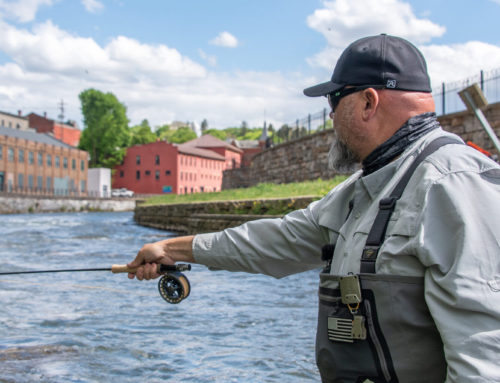By Serge Bielanko
On a recent trip to the battlefields of Gettysburg National Military Park, I took a moment to stop and stare up at the famed Pennsylvania State Memorial, a monument dedicated to the 34,530 Pennsylvania soldiers who fought at the three day Battle of Gettysburg in July of 1863. It’s an almost overwhelming sight if you’ve never seen it. Rising high above the serene fields where savage war once reigned for a brief but critical moment in our country’s history, the memorial is a towering reminder of the role our Keystone State played in both the battle and the Civil War itself.
And there on the west side of the memorial, among the statues of legendary Union Army generals who helped lead the Pennsylvanians to victory, stands the statue of Bellefonte’s native son, Governor Andrew Gregg Curtin.
If you’ve spent enough time in this town then you’ve certainly heard Curtin’s name before. It’s enshrined in the Governors’ monument at Talleyrand Park. It’s there on a historical marker on Allegheny Street. Heck, you pass beneath his serious gaze every time you drive by the courthouse: that’s him standing right out front there, that big statue you’ve been moving past for years now. Indeed, Curtin, who served as Pennsylvania’s Governor during the Civil War, remains an integral part of Bellefonte’s history.
But did Governor Curtin also ensure that one of President Abraham Lincoln’s finest moments actually happened?!?!
This November 19th marks the 155th anniversary of the Gettysburg Address. It’s hard to argue with that one short speech’s lasting legacy. With a firm commitment to both preserving the national union and doing away with slavery, President Lincoln, three years into a terrible conflict at that point, emphasized the greater democratic good he felt certain would come from so much horrific war and loss. It was a speech that citizens of the world continue to quote and draw inspiration from to this day.
And guess what? It may have never happened if it weren’t for Governor Curtin.
See, Lincoln and Curtin were confidants and friends. Curtin had been a staunch supporter of Lincoln’s Presidential campaign from the very beginning. When war finally broke out in 1861, Governor Curtin assured the President that Pennsylvania backed him completely. Before long he was known far and wide as ‘The Soldiers Friend’ due to his endless efforts on behalf of the Union Army. And it was Bellefonte’s Curtin who pushed for the creation of the Soldiers’ National Cemetery at Gettysburg to inter and honor the more than 3,500 Union Army soldiers who died during the battle.
That cemetery was dedicated on November 19, 1863, on a mild autumn day.
In the weeks leading up to the event, Governor Curtin had reportedly been in contact with the President. Some say he was instrumental in convincing Lincoln to attend the service, while others even maintain that it was Curtin himself who urged Abraham Lincoln to say a few words to the crowd that day. After all, if the President was coming all this way to be a part of everything, why not have him speak to those in attendance? It makes perfect sense to me. But I know that’s not exactly how history works, huh?
So we may never know the exact truth behind those claims, but consider this. Bellefonte’s own Andrew Gregg Curtin was a close and trusted friend of President Abraham Lincoln’s. And the two men sat very close to one another on the stage that day. It hardly seems impossible that Curtin was a driving force behind so much of what happened on that afternoon so long ago, right?
As far as I’m concerned, if any Centre County person ever wants to claim that the Gettysburg Address was a Bellefonte idea, well…I think I’m okay with that.
Somehow it rings true.
And I’m guessing Governor Curtin would smile at that.
Sources:
Andrew G. Curtin Historical Marker
Andrew Curtin Gettysburg National Military Park
Civil War era’s Gov. Curtin an early Republican leader in Pa., staunch Lincoln supporter



